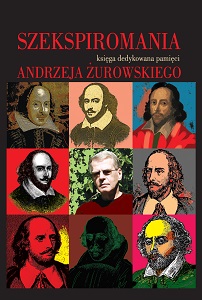Hamlet jednorożec
The Unicorn Hamlet
Author(s): Jarosław Komorowski
Subject(s): Theatre, Dance, Performing Arts, Cultural history, Theoretical Linguistics, Applied Linguistics, Studies of Literature, Philology, Theory of Literature, British Literature
Published by: Wydawnictwa Uniwersytetu Warszawskiego
Keywords: Shakespeare; The Tempest; Julius Caesar; Timon of Athens; unicorn; Hamlet; Ophelia; Mousetrap Scene
Summary/Abstract: Shakespeare’s "The Tempest", "Julius Caesar" and "Timon of Athens" all contain references to the unicorn, a fabled beast whose existence was nevertheless taken seriously by some of the learned Elizabethans. The unicorn made its first appearance in European culture in the writings of classical Greeks and Romans, and it attained a symbolic significance early in the first millennium, as attested in "The Physiologus". The creature was believed to be too wild to capture unless a virgin was at hand to tame it, as the beast would approach her meekly and lay its head on her pure lap, where it became exposed to the hunters’ attack. By analogy to the Virgin Mary, who “captured” Jesus Christ for humanity, the unicorn became a symbol of the Saviour. Bestiaries paved the way for plentiful iconographic depictions of a unicorn with its head on a virgin’s lap in medieval paintings, carvings and sculptures, including strictly Christian versions of the Visitation featuring the unicorn where the Archangel Gabriel visits Mary as a hunter, with the animal symbolizing Christ climbing onto Mary’s lap. In "Hamlet", Shakespeare uses this popular theme in the Mousetrap Scene at a purely visual level, without actually naming the animal. In a stage transposition of the iconographic motif, the Prince of Denmark approaches Ophelia and lays his head on her lap following a brief exchange (“Lady, shall I lie in your lap?”) before "The Murder of Gonzago" can begin. In this way the play makes elegant use of the unicorn legend as the exchange links back to an earlier scene where Claudius and Polonius were trying to hunt Hamlet down using Ophelia as bait.
Book: Szekspiromania. Księga dedykowana pamięci Andrzeja Żurowskiego
- Page Range: 426-437
- Page Count: 12
- Publication Year: 2013
- Language: English, Polish
- Content File-PDF

